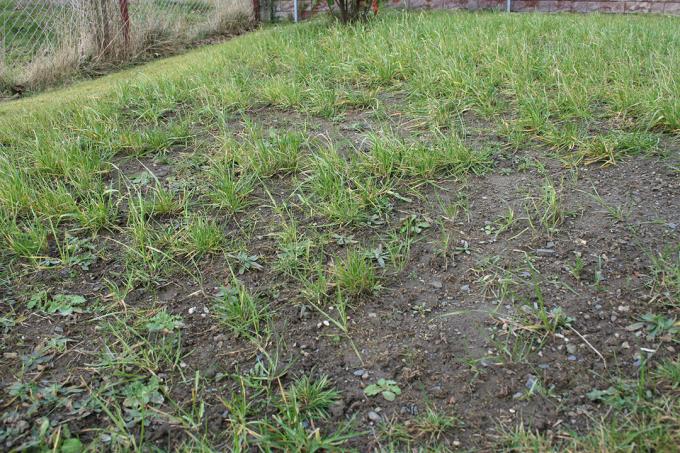
table of contents
- Bald spots in the lawn
- Occurring problems
- frequently asked Questions
If there are bald spots in the late fall or winter race show, the question arises whether they can re-sow immediately in frosty conditions. This article explains how useful such a measure is.
In a nutshell
- sometimes bald spots remain in the lawn in autumn
- sowing in winter makes little sense
- Grass does not germinate in frost
- Birds eat the lawn seeds
- young grass can dry up in frost
Bald spots in the lawn
Whether it's the Maintenance measures of the lawn in autumn lies or because of the frost in winter. Even in the cold season, bald spots can form in the lawn. The temptation is great to sow them again immediately so that the lawn will soon appear as a closed area again. The benefits of sowing lawns when there is frost seem obvious:
- there is more time in winter, with little other gardening work to be done
- Lawn doesn't need to be watered as often as it is damp anyway
- Sun exposure is not that strong
- Lawn has time to grow well by spring

Note: Clearing the snow from the lawn in winter does not protect it from bare spots. On the contrary, the snow itself has a protective function.
Occurring problems
Even if it is theoretically possible to sow the lawn in winter, in reality it does very little. This has the following reasons:
- Grass seeds need a certain minimum temperature to germinate. This is 8 to 10 degrees and must remain constant over a longer period of time.
- Soil cultivation is difficult, if not impossible. Raking and leveling seeds do not work as well.
- Exposed seeds are eaten by birds before they can germinate.
- If the seed does germinate, the young will dry up Grasses at the next frost, because they can no longer absorb water. Irrigation does not help either.

Note: The garden irrigation can freeze in frost. For this reason alone, it is difficult to water the lawn properly in winter.
frequently asked Questions
Since the lawn is dormant in winter, maintenance makes little sense. This applies above all to fertilization, which can even be harmful. Any tillage is harmful in any case when the ground is frozen. Only watering can be useful in mild temperatures and drought.
Basically as soon as the ground is thawed. However, it can take a long time for the grass seeds to germinate if the required temperature is not reached.
Of course, grass is hardy. However, frost damage can occur if the lawn suffers from frost drought in winter. Then the grasses do not freeze to death, they dry up.


